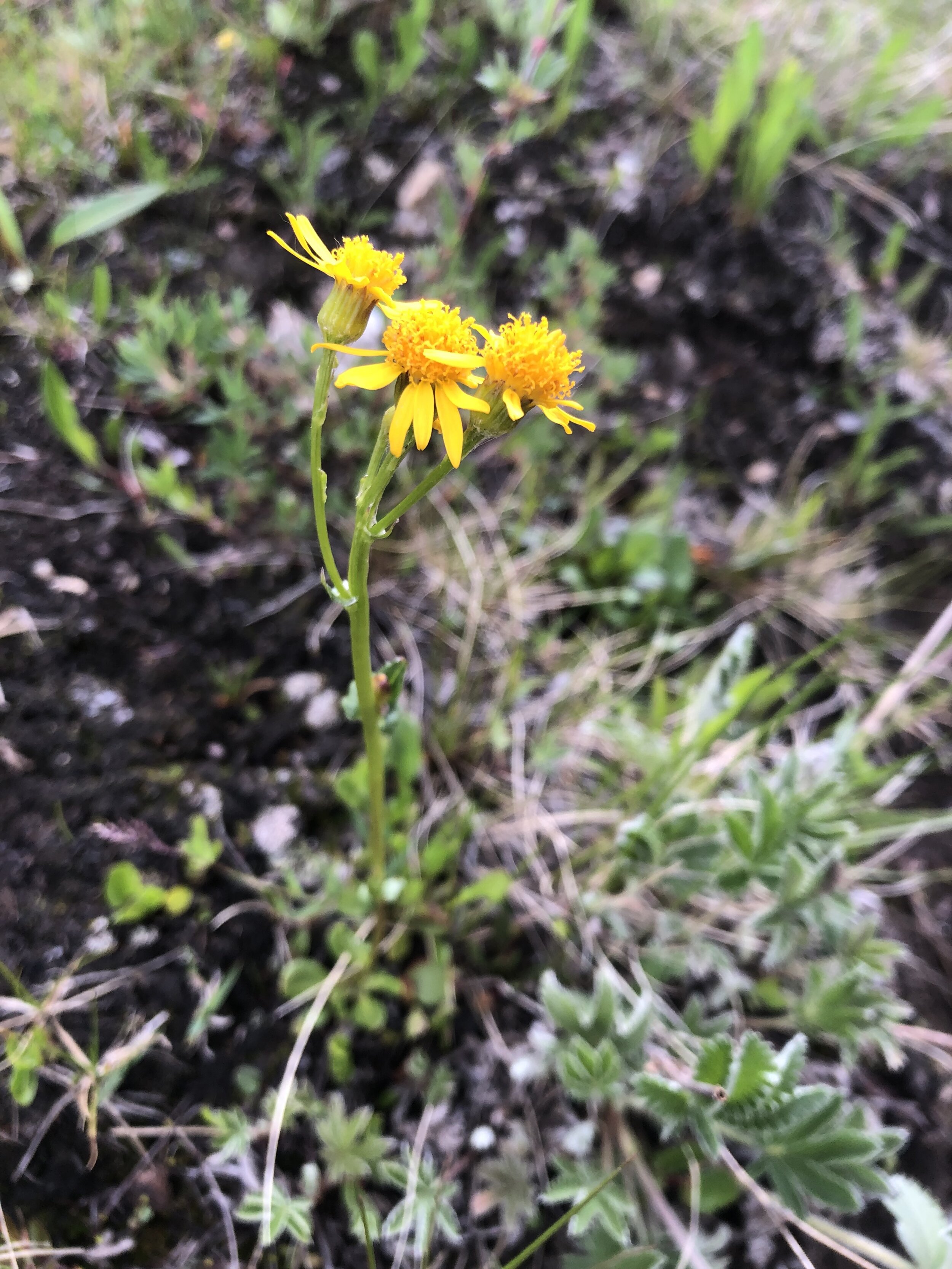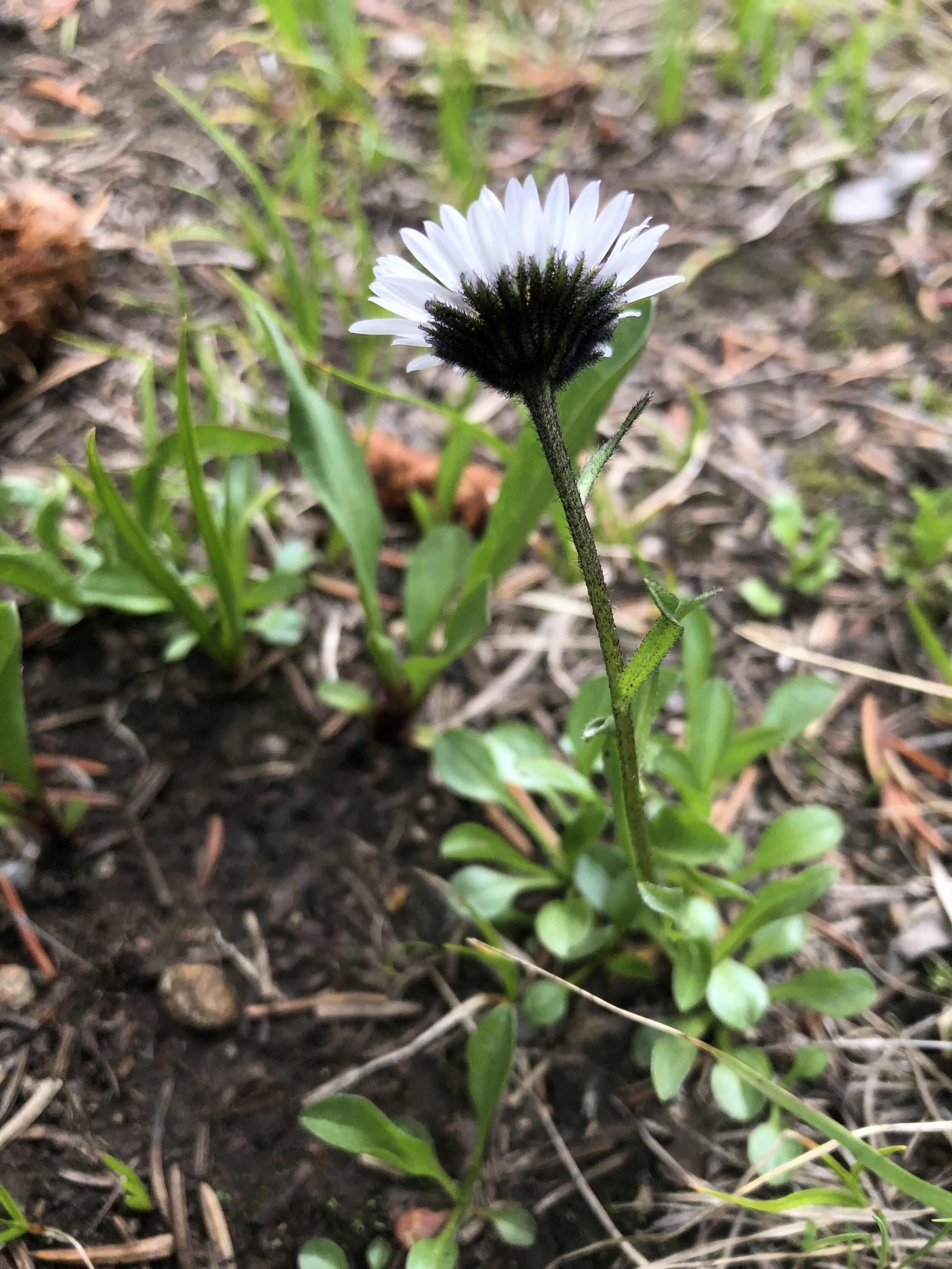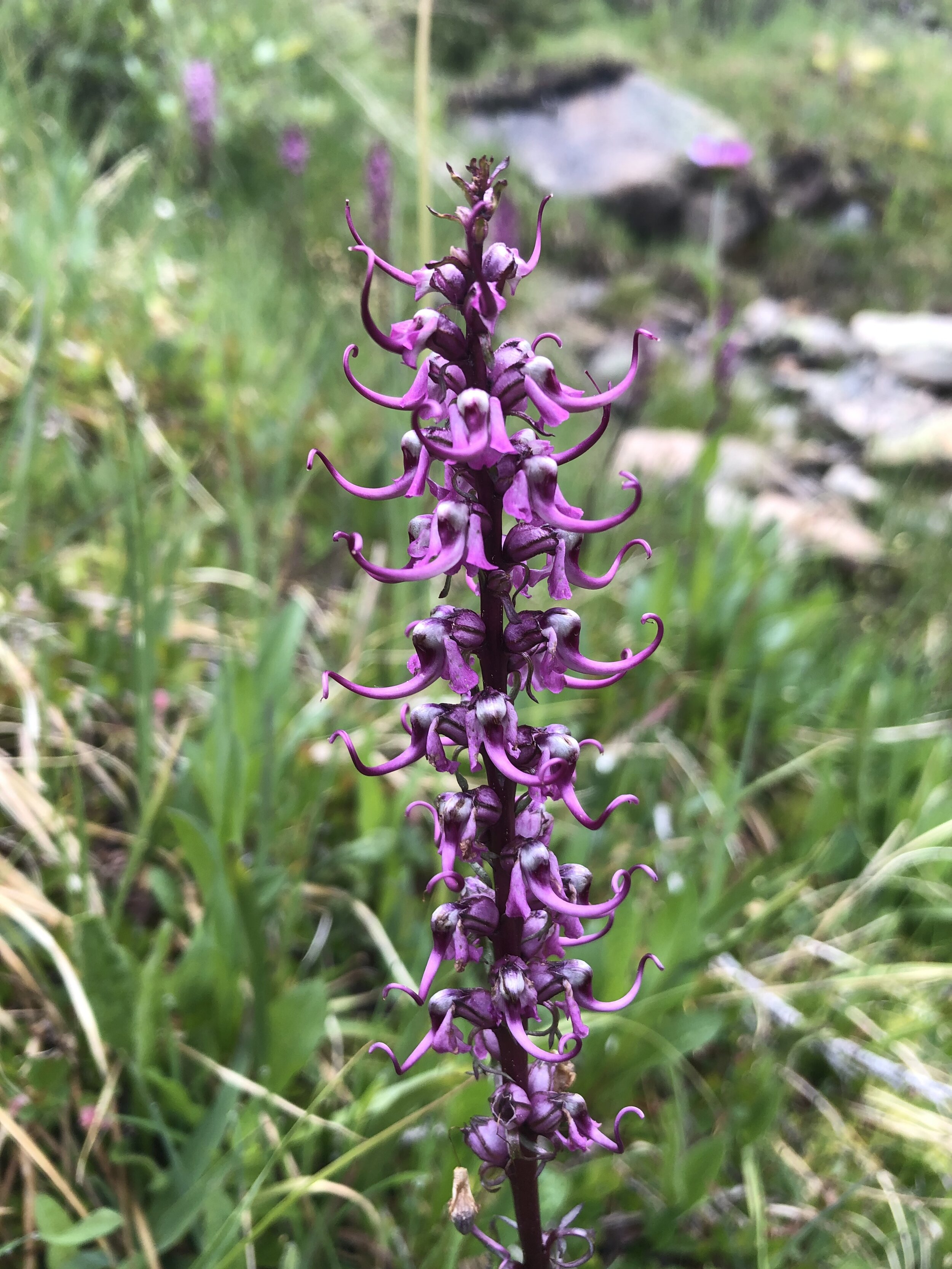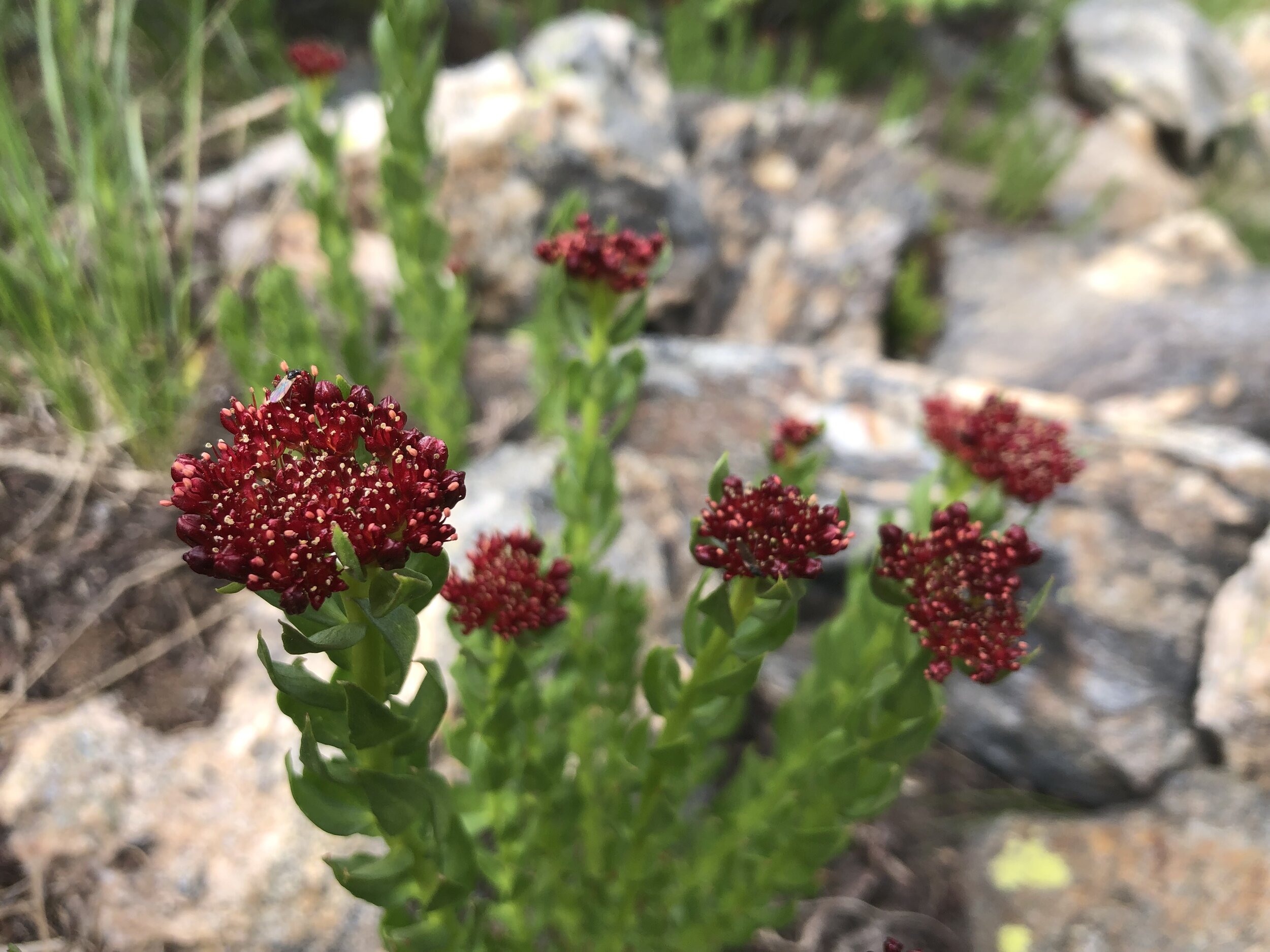Packera dimorphophylla, July 2, 2021
Common & scientific name
Two-leaved groundsel or ragwort, Packera dimorphophylla
Family
Sunflower, Asteraceae
Location
Sayres Gulch, 11,400
Fun, weird, helpful, or little known fact
A number of yellow sunflowers previously included within the Senecio genus were moved three decades ago into the Packera genus. P. dimorphophylla has triangular-shaped, clasping/auricled stem leaves and can be distinguished from its close cousin, P. crocatus, by those clasping stem leaves and yellower (less orange) color.






























